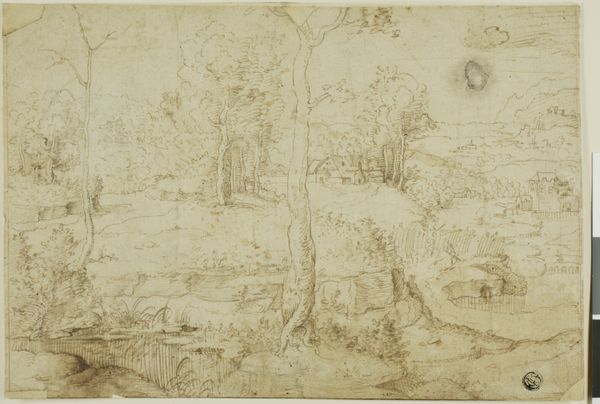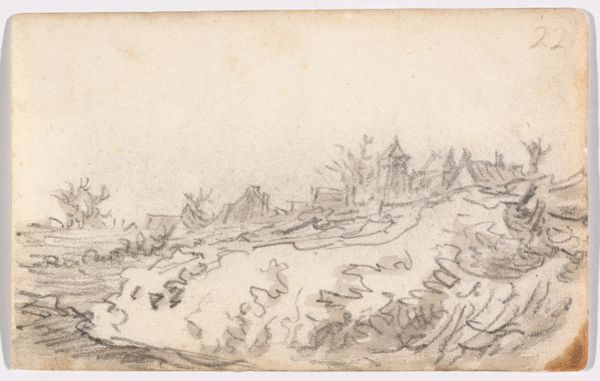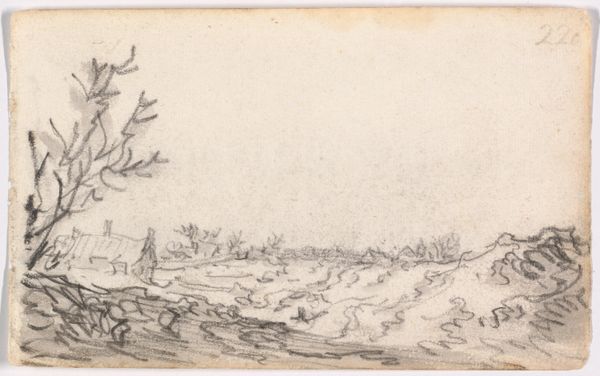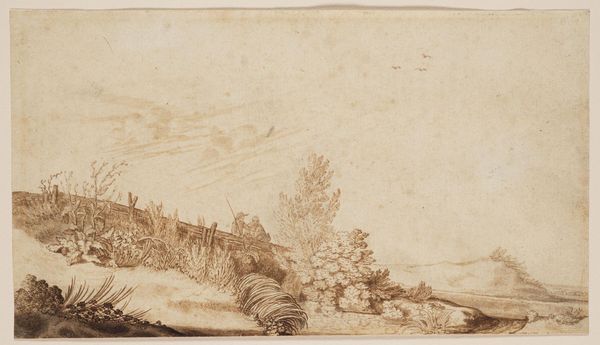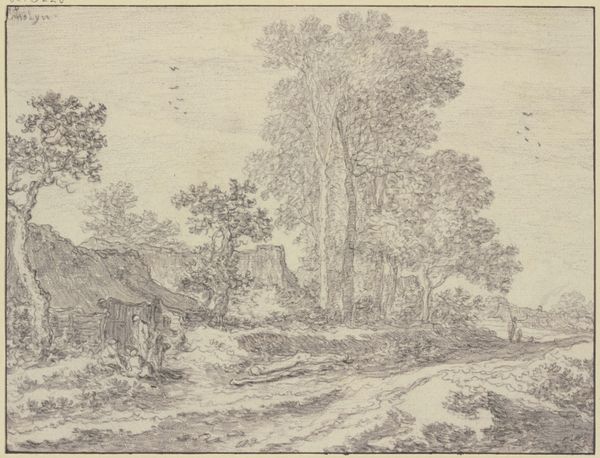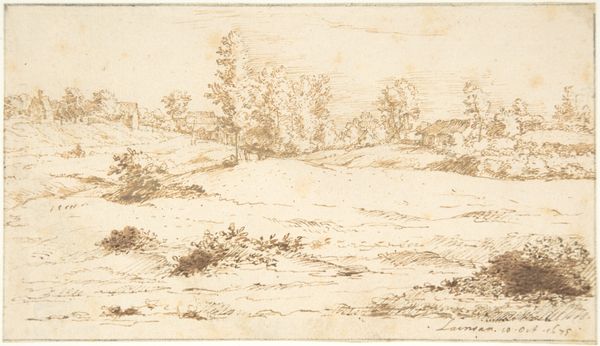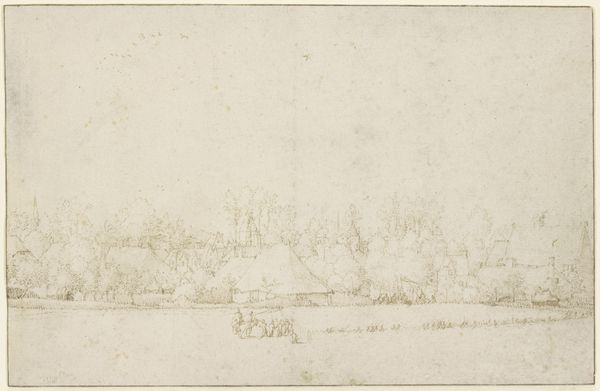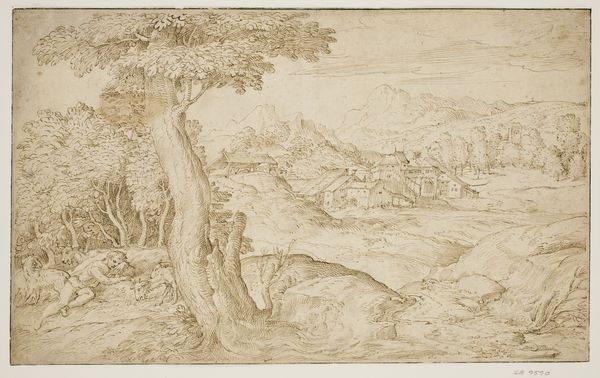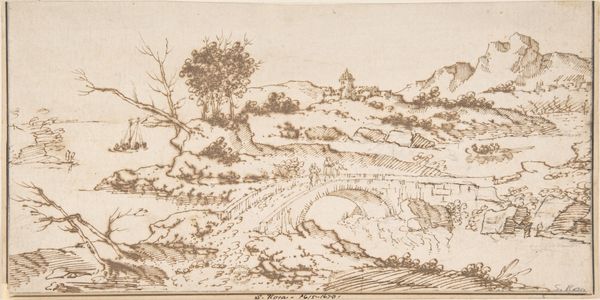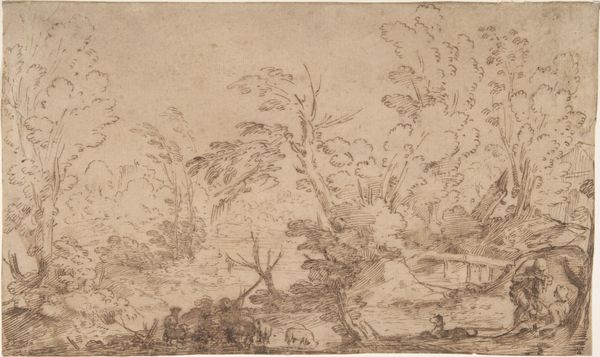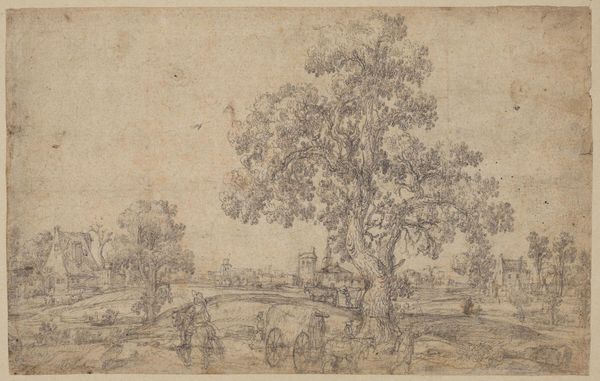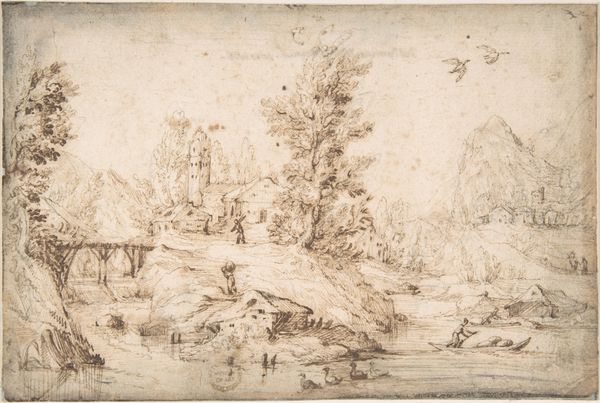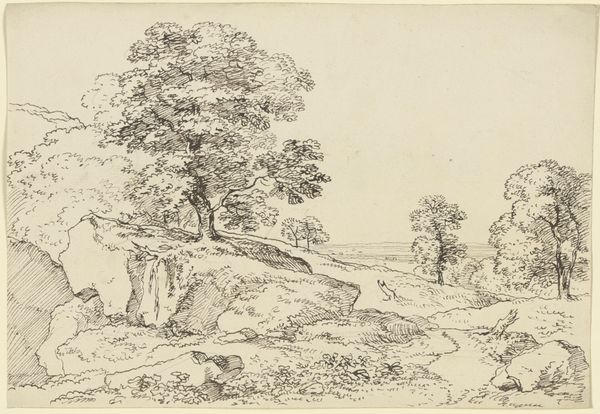
Landscape with a Walled City and a Large Body of Water 1515 - 1548
0:00
0:00
drawing, print, metal, etching
#
drawing
# print
#
metal
#
etching
#
landscape
#
etching
#
northern-renaissance
Dimensions: 4 15/16 x 7 15/16 in. (12.5 x 20.2 cm)
Copyright: Public Domain
Editor: This is Matthijs Cock's "Landscape with a Walled City and a Large Body of Water," created sometime between 1515 and 1548, an etching in metal. The level of detail in this small print is remarkable, it almost feels like you're peering into another world. What social or cultural elements jump out at you? Curator: Well, let’s consider the historical context. The detailed depiction of the walled city suggests the growing importance of urban centers during the Northern Renaissance, where commerce and culture flourished. But what does the artist tell us by setting up the tension between the pastoral foreground and the fortified city? Editor: It feels almost like two worlds coexisting but separate, a sense of longing maybe? Curator: Precisely! Consider the function of art during this period. Etchings like this were relatively inexpensive, easily reproduced, and widely circulated. In this piece, what purpose did imagery serve in shaping perceptions of urban life versus rural simplicity, especially as the merchant class gained prominence? Did these landscapes simply offer an escape, or did they promote a certain social ideal? Editor: So, you're saying that landscape art wasn't just pretty scenery. It was part of a conversation about the values of the time? Curator: Exactly. Look at the details, like the figures in the boats. They are actively using the waterways for transport, indicating a thriving economic system centered around these urban areas, supported by the surrounding rural landscapes. Editor: That really changes how I see the walled city in the distance. It's not just a backdrop but a key player. I hadn't considered the socioeconomic implications of landscape before. Curator: That's the beauty of analyzing art through a historical lens; it’s about uncovering those hidden stories and understanding the politics of representation, how artists and their patrons consciously and unconsciously shaped our understanding of the world around them.
Comments
No comments
Be the first to comment and join the conversation on the ultimate creative platform.
